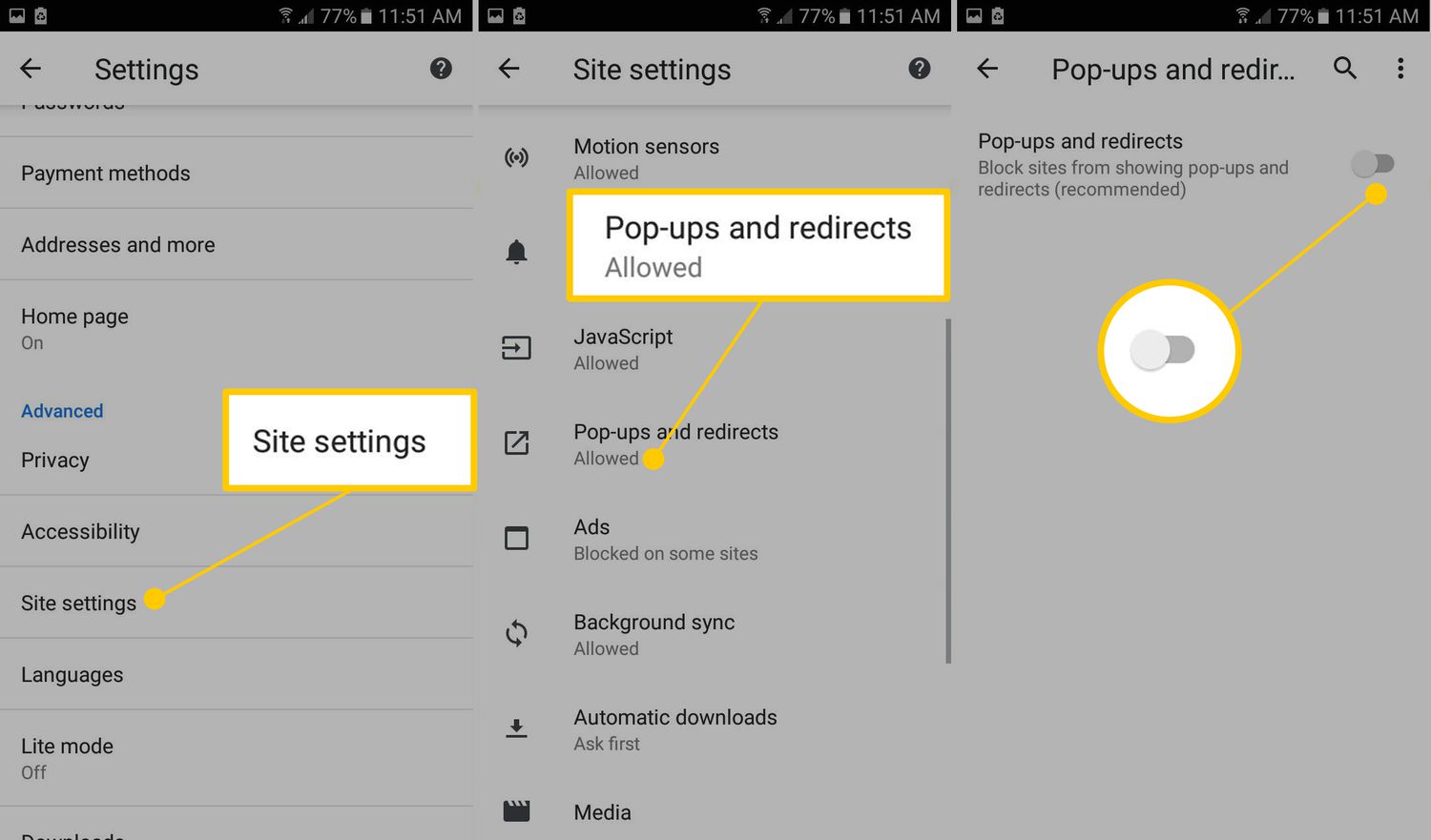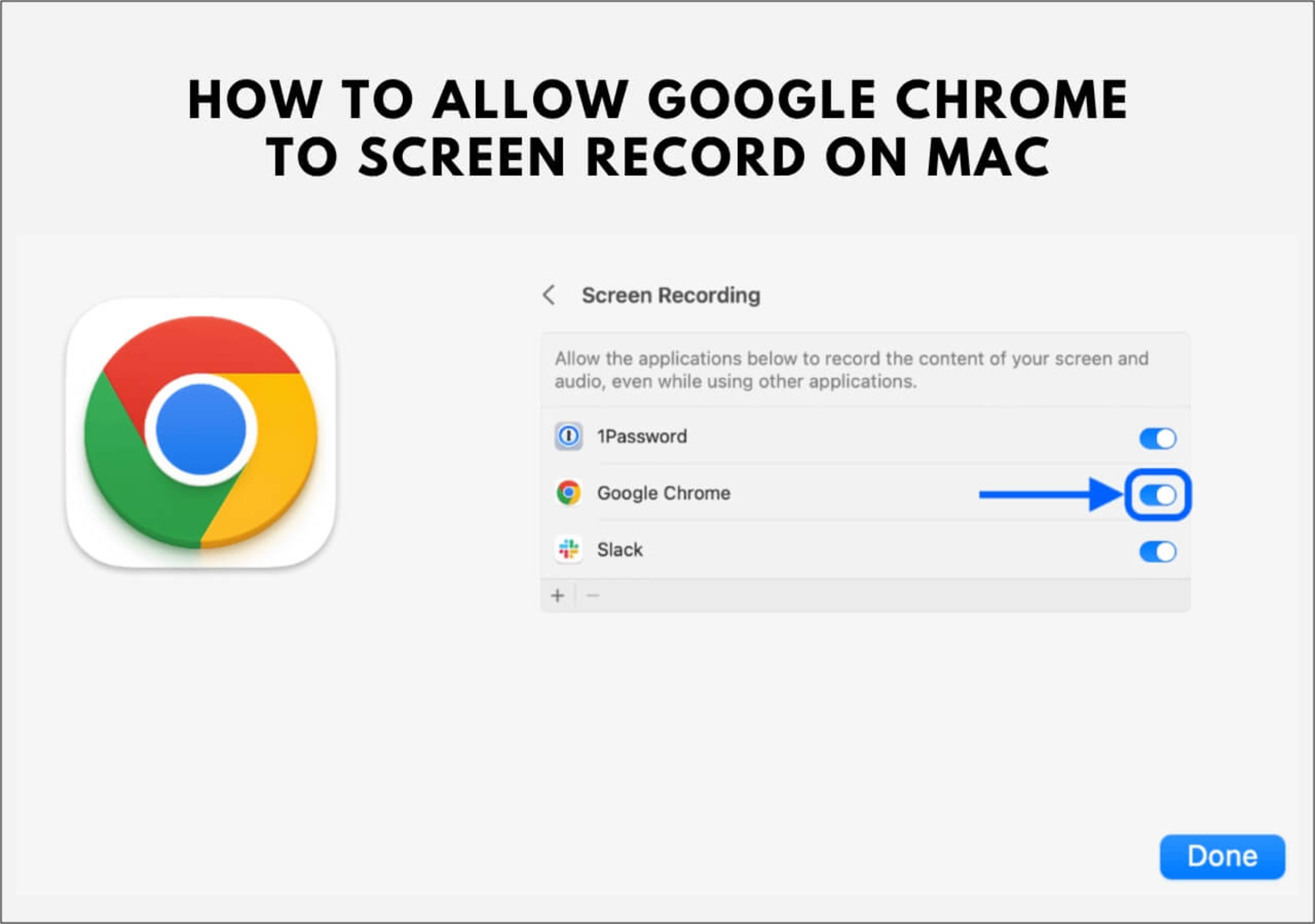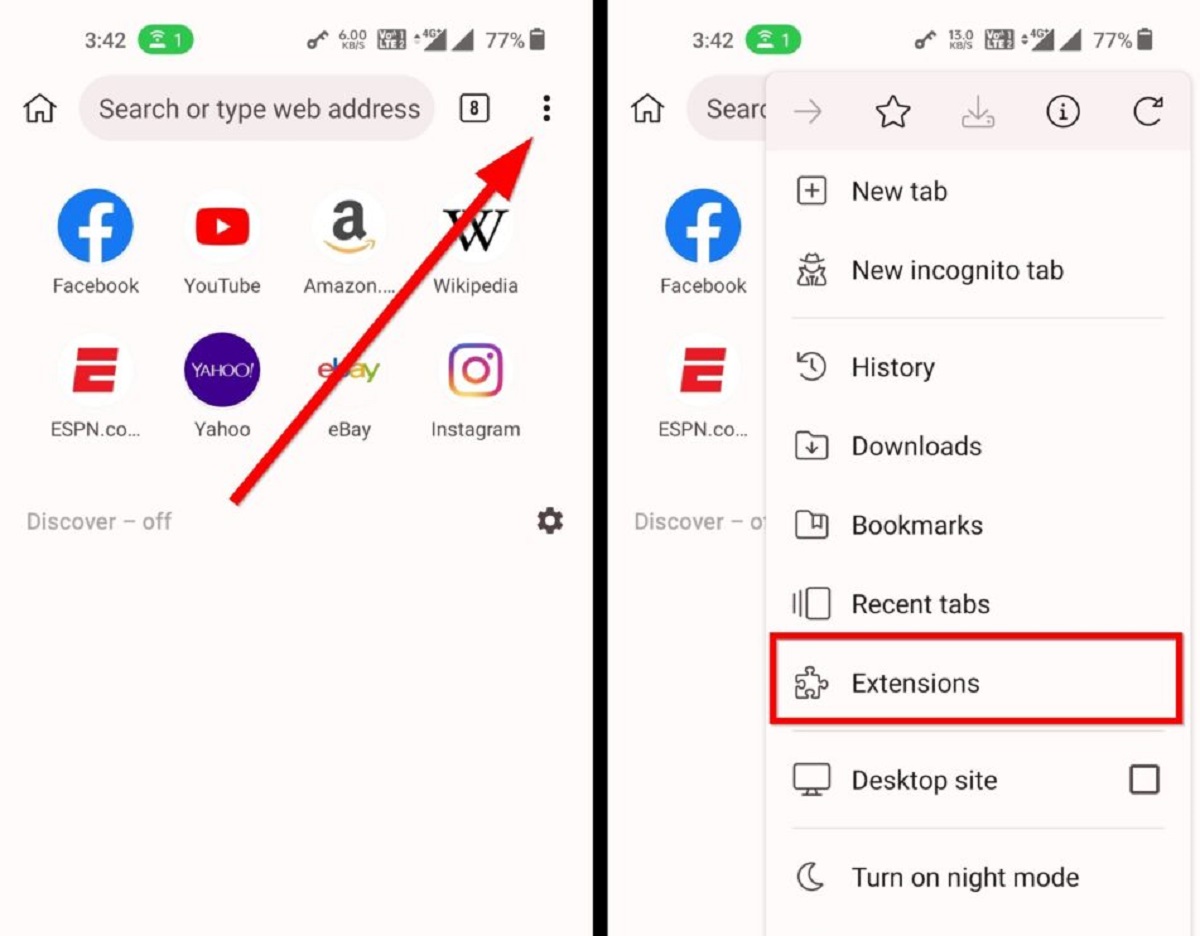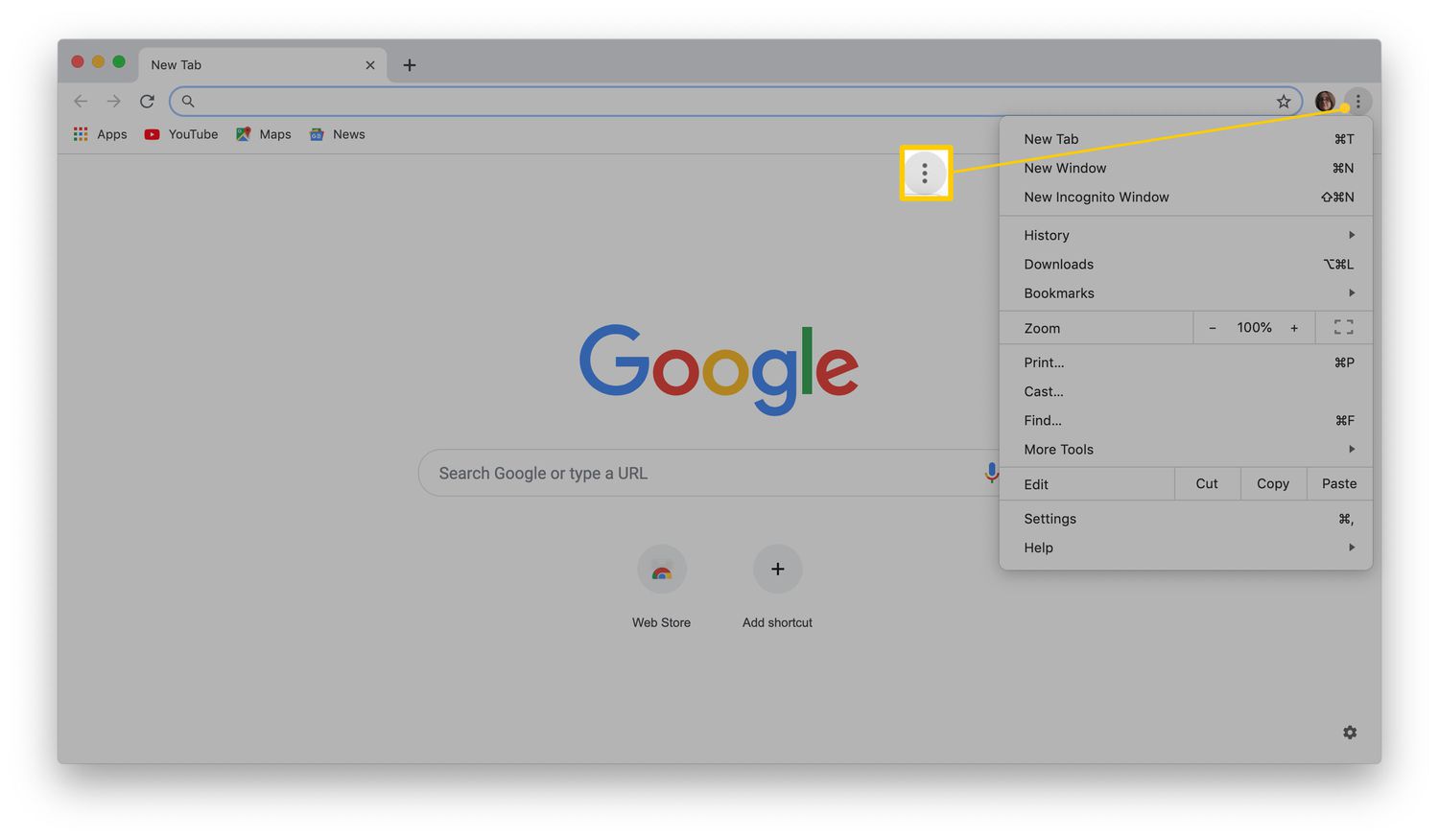Introduction
Google Chrome is one of the most popular web browsers globally, known for its user-friendly interface and powerful features. One such feature is the trending searches displayed on the browser's new tab page. These trending searches provide users with a glimpse of the most popular topics being searched by others, offering a quick way to stay updated with current events and popular interests.
While this feature can be intriguing and informative, some users may find it distracting or intrusive. Additionally, there are privacy concerns associated with the display of trending searches, as it may inadvertently reveal sensitive information about users' browsing habits. As a result, many individuals seek ways to disable or stop trending searches from appearing on their Google Chrome browser.
In this article, we will delve into the concept of trending searches on Google Chrome, explore the potential risks and concerns associated with this feature, and provide actionable steps to stop trending searches from being displayed. Whether you are looking to enhance your browsing privacy or simply prefer a cleaner new tab page, understanding how to manage trending searches on Google Chrome can significantly improve your browsing experience.
Understanding Trending Searches on Google Chrome
Trending searches on Google Chrome's new tab page are a dynamic feature designed to showcase the most popular and widely searched topics at any given time. This functionality aims to provide users with a snapshot of current interests and trending news, offering a convenient way to stay informed about popular search queries. When users open a new tab in Google Chrome, they are greeted with a visually appealing display that includes a search bar and a collection of trending searches, often accompanied by relevant images or thumbnails.
The trending searches are typically categorized into various topics, such as news, entertainment, sports, technology, and more, reflecting the diverse interests of users worldwide. These trending topics are curated based on the frequency and volume of searches conducted by Google users, giving individuals a glimpse into the collective curiosity of the online community.
From a user experience perspective, the display of trending searches can serve as a source of inspiration, sparking curiosity and prompting users to explore trending topics that align with their interests. It can also facilitate quick access to popular news stories or events, enabling users to stay abreast of current affairs without actively conducting a search.
However, while the feature offers a convenient way to discover trending content, some users may find the constant display of trending searches distracting or disruptive to their browsing experience. Additionally, there are privacy implications associated with the visibility of trending searches, as it may inadvertently expose users' browsing preferences and interests to anyone who can view their browser screen.
Understanding the mechanics and purpose of trending searches on Google Chrome is essential for individuals seeking to manage and customize their browsing environment. By gaining insight into how this feature operates and its potential impact on privacy and user experience, users can make informed decisions about whether to disable or modify the display of trending searches on their browser's new tab page.
In the following sections, we will explore the risks and concerns associated with trending searches on Google Chrome and provide actionable steps to stop or customize the display of trending searches, empowering users to tailor their browsing experience according to their preferences and privacy considerations.
Risks and Concerns
The display of trending searches on Google Chrome's new tab page raises several notable risks and concerns, prompting users to evaluate the implications of this feature on their browsing privacy and overall user experience. While the concept of showcasing popular search queries may seem innocuous at first glance, there are underlying considerations that warrant attention.
Privacy Implications
One of the primary concerns associated with the visibility of trending searches is the potential compromise of user privacy. By prominently featuring trending topics, Google Chrome inadvertently exposes users' browsing interests and search queries to anyone who can view their browser screen. This visibility may pose a risk, especially in shared or public environments, where individuals may prefer to keep their browsing habits private. Furthermore, the display of trending searches could inadvertently reveal sensitive or personal information about users' interests, potentially leading to unintended disclosures.
Distraction and Intrusiveness
For some users, the constant presence of trending searches on the new tab page may prove to be distracting or intrusive. While the feature aims to provide a snapshot of current interests, it may disrupt the user's focus and detract from their intended browsing activities. The visually dynamic nature of trending searches, often accompanied by images or thumbnails, can draw attention away from the user's primary objectives, leading to a less streamlined browsing experience.
Customization and User Preferences
Another consideration pertains to the individual preferences of users regarding the content displayed on their new tab page. While some users may appreciate the presence of trending searches as a source of inspiration or quick access to popular topics, others may prefer a more minimalist or personalized new tab experience. The inability to customize or disable trending searches may limit users' ability to tailor their browsing environment according to their unique preferences and needs.
Data Security and Tracking
The display of trending searches also raises questions about data security and tracking. As the feature showcases popular search queries, it may contribute to the aggregation of user data for analytical purposes. While Google Chrome emphasizes user privacy and data protection, the collection and utilization of trending search data may warrant scrutiny from individuals concerned about data security and tracking practices.
By acknowledging these risks and concerns, users can make informed decisions about managing the display of trending searches on their Google Chrome browser. In the subsequent section, we will explore actionable steps to stop or customize the visibility of trending searches, empowering users to align their browsing experience with their privacy preferences and user-centric needs.
How to Stop Trending Searches on Google Chrome
If you find the display of trending searches on your Google Chrome new tab page distracting or privacy-intrusive, you'll be pleased to know that there are several methods to stop or customize the visibility of trending searches. By taking advantage of built-in browser settings and extensions, you can tailor your browsing environment to align with your preferences and privacy considerations.
Built-in Browser Settings
Google Chrome offers a straightforward approach to disable trending searches directly from the browser settings. Here's how you can do it:
-
Access Chrome Settings: Open Google Chrome and click on the three-dot menu icon located in the top-right corner of the browser window. From the dropdown menu, select "Settings" to access the browser's configuration options.
-
Customize the New Tab Page: Within the Settings menu, navigate to the "Appearance" section. Here, you will find the "Show quick site suggestions" option. Toggle this setting off to disable the display of trending searches on the new tab page.
-
Verify the Changes: After disabling the quick site suggestions, open a new tab to confirm that the trending searches are no longer visible. Your new tab page should now present a cleaner interface without the trending searches feature.
Browser Extensions
Alternatively, you can leverage browser extensions to further customize your new tab page and prevent trending searches from being displayed. Numerous extensions are available that offer enhanced control over the content and layout of the new tab page. Here's how you can use extensions to stop trending searches:
-
Explore Extension Options: Visit the Chrome Web Store and search for "new tab extensions" or "custom new tab page." Look for extensions that provide features for customizing the new tab page, including the ability to remove trending searches.
-
Install the Extension: Select a suitable extension that aligns with your preferences and privacy requirements. Click on the "Add to Chrome" button to install the extension.
-
Configure the Extension: Once installed, configure the extension settings to disable the display of trending searches on the new tab page. Each extension may offer different customization options, allowing you to tailor the new tab page according to your preferences.
By utilizing these methods, you can effectively stop trending searches from being displayed on your Google Chrome new tab page, enhancing your browsing privacy and creating a personalized browsing environment that aligns with your preferences.
Remember that while disabling trending searches can address privacy and distraction concerns, it's essential to stay informed about the implications of modifying browser settings and using third-party extensions. Always ensure that you trust the sources of browser extensions and review their permissions before installation to maintain a secure browsing experience.
Conclusion
In conclusion, the display of trending searches on Google Chrome's new tab page offers a glimpse into the collective interests and popular search queries of users worldwide. While this feature can be informative and visually engaging, it also raises significant privacy concerns and potential distractions for users. By understanding the risks and implications associated with trending searches, individuals can make informed decisions about managing their browsing environment to align with their preferences and privacy considerations.
The risks and concerns related to the visibility of trending searches encompass privacy implications, potential distractions, limitations in customization, and considerations regarding data security and tracking. These factors prompt users to evaluate the impact of trending searches on their browsing experience and privacy, leading to a desire for greater control over the content displayed on their new tab page.
Fortunately, users have the ability to stop or customize the visibility of trending searches through built-in browser settings and the use of browser extensions. By leveraging these methods, individuals can tailor their browsing environment to suit their preferences, enhancing their browsing privacy and creating a more personalized new tab page experience.
It's important to note that while disabling trending searches can address privacy and distraction concerns, users should remain vigilant when modifying browser settings and installing third-party extensions. It's advisable to exercise caution, verify the trustworthiness of browser extensions, and review their permissions to ensure a secure browsing experience.
Ultimately, the ability to manage the display of trending searches empowers users to take control of their browsing environment, aligning it with their unique preferences and privacy considerations. Whether seeking a cleaner new tab page or aiming to safeguard browsing privacy, the options to stop or customize trending searches on Google Chrome provide individuals with the flexibility to curate their browsing experience according to their needs.
By staying informed about the available methods to manage trending searches and understanding the implications of these choices, users can navigate their browsing environment with greater confidence, ensuring that their privacy and user experience remain at the forefront of their online interactions.

























